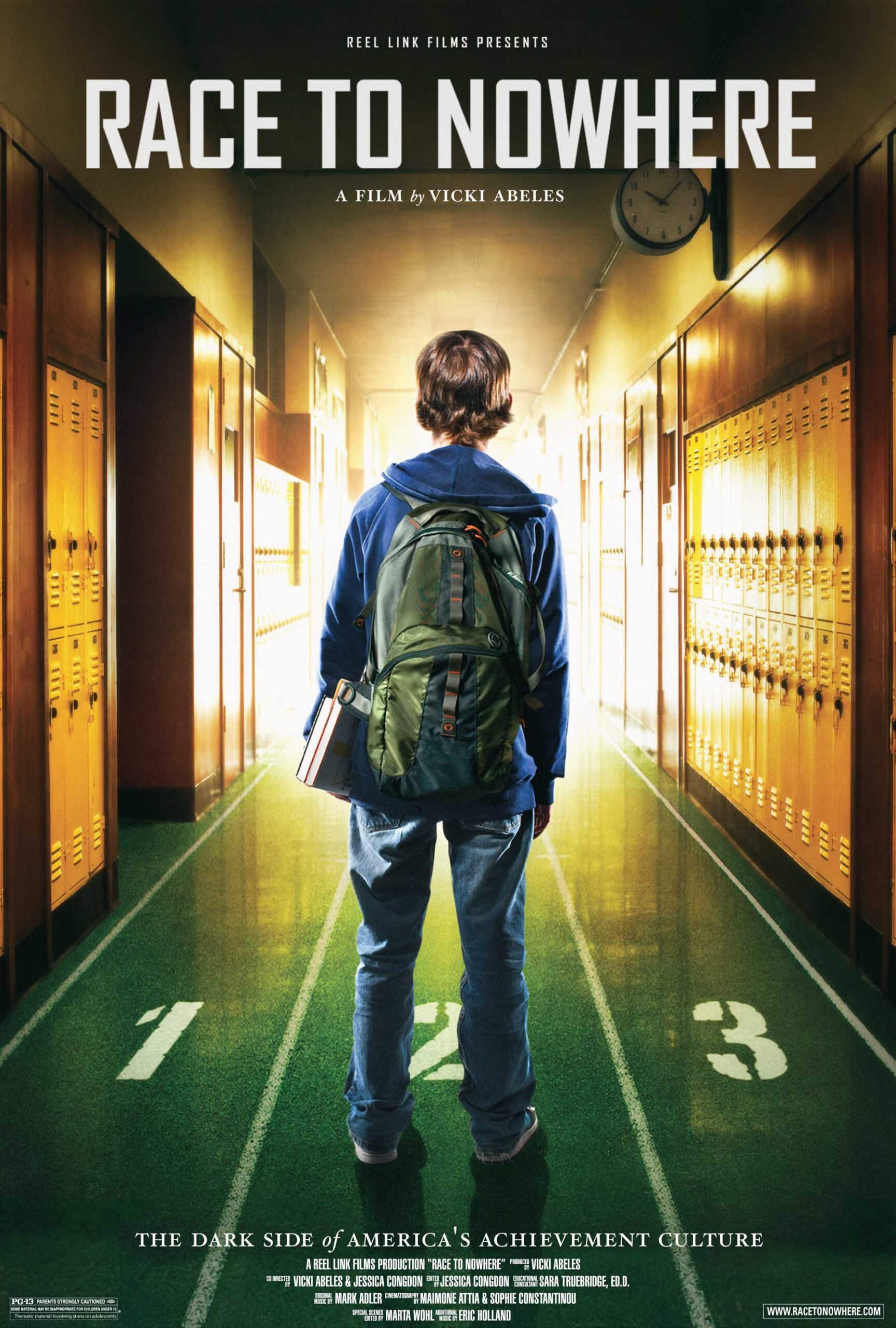After the suicide of a high-achieving thirteen-year-old girl in her community, Vicki Abeles was moved to make the film “Race to Nowhere” to bring attention to some of the problems with the American education system.
Though the film is now ten years old, it remains highly relevant.
The film’s main criticism is for the large and increasing amounts of homework that American school children, even elementary school students, are expected to complete every day. This homework, and the pressure to do well and get into a good college, are creating high levels of stress for students, without resulting in students actually learning more or being better prepared for college or career.

Release Year: 2010
Directors: Vicki Abeles, Jessica Congdon
Running Time: 1 hour, 25 minutes
Watch trailer | Watch film (until 01/31/2020)
Abeles spoke to teachers, doctors, parents, and students, including her own children, to paint a full picture of the impacts of high pressure for academic success and too much homework.
Homework, it turns out, is of limited value, especially at younger ages.
Studies show that in elementary school, there is no correlation between any amount of homework and academic achievement; in other words, there is no value in or reason to assign homework to elementary schoolers.
For middle schoolers, there is some benefit.
There is correlation with higher academic achievement, but it drops off after about one hour of homework per day. In high school, the correlation caps at about two hours per day. Anything above these amounts is of little to no benefit.
Studies have also shown that countries that outperform the United States academically give less homework than US schools do.
Dr. Wendy Mogel, a clinical psychologist, says that kids these days are overscheduled and tired. Children, including teenagers, are still growing, and need nine hours of sleep each night. But many are not getting that much because they are too busy with school activities and homework.
“This is a form of neglect,” says Dr. Mogel.
When it comes to homework, rather than assigning a high volume, teachers and school administrators should instead ask themselves two questions:
- What is the purpose of the homework?
- And what is developmentally appropriate?
“All along the way, we’re missing developmental tasks with a preoccupation with performance,” says one of the subjects in the film.
Schools and parents also tend to forget that play is very important for learning and socialization, especially for young children.
A teacher in Oakland, California, Darrick Smith, thinks the current education system is dehumanizing. He feels the system is trying to further “roboticize” students, to make them academic competitors and producers.
Another teacher discusses how students are not really learning what they will need to succeed in jobs. Jobs need you to be a critical thinker, a problem solver, and to work well in groups, she says, but learning and practicing these things are pushed aside in schools, where it’s all about testing now.
In general, American students do not perform as well as students in other countries, especially in science and math.
This is partially related to how we teach math and science, according to the film. We teach math and science in a very formulaic way, and we teach to the test.
Another thing other countries are doing better than the United States is investing in teachers and providing them with professional pay. Those that invest more in teachers are outperforming the United States. This is because quality of teaching is what matters most in education, according to a study cited in the film.
The film fairly places a lot of the blame on the No Child Left Behind Act of 2002. Thankfully, one thing that has changed since the release of the film is that NCLB was repealed in 2015. However many of the same problems that No Child Left Behind created or exacerbated continue, even with it no longer in force.
There is still too much emphasis on testing. Teachers are still held to high standards without receiving fair compensation or the support needed to adequately do their jobs. Teacher strikes have become a regular occurrence throughout the country over the last few years, as teachers fight not just for fair compensation for themselves, but for better learning conditions for their students.
Abeles made another film, “Beyond Measure”, in 2014, that further explores some of these issues in schools, and also published a book with the same name.
“Race to Nowhere” can be screened for free until January 31st on the film’s website, and is also available on traditional streaming services such as iTunes, YouTube, and Google Play, for a fee, if you miss the free streaming special.
On the film’s website you can also request to host a screening of the film in your community, find more information and resources about education issues, and learn about ways to take action to improve schools.



I will definitely watch this, thanks for the review!